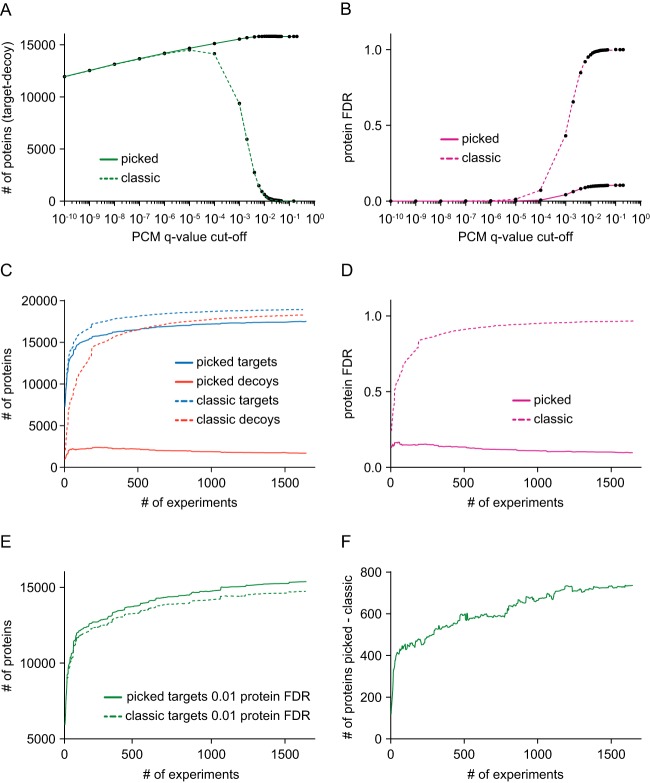Fig. 3.
Comparison of the classic TDS to the picked TDS. First, we compared the performance of the picked (solid) and classic (dashed) approach when filtering the PCMs on various FDR cutoffs using the best PCM q-value as protein score. A, With increasing PCM q-value cutoffs, the number of true positive protein identifications (number of target proteins − number of decoy proteins) increases and is comparable between the picked and classic approach. At roughly 10−4 PCM q-value cutoff, the number of true positive proteins starts to decrease and quickly drops to almost zero for the classic approach, whereas true positive proteins IDs increase further and converges at stable plateau of 15,817 proteins in the picked approach. B, The estimated protein FDR of the classic and picked approach mirrors the trend seen in panel A. Although the estimated protein FDR increases constantly when increasing the PCM q-value cutoff and eventually reaches 100%, the picked approach starts to rise much later and plateaus at roughly 10%. C, Then we compared the classic and picked approach when accumulating experiments. The cumulative number of target (blue) protein identifications of the classic and picked approach increases with more data, whereas the classic approach saturates more rapidly and reports higher numbers of proteins. Conversely, although the number of decoy (red) protein identifications reported by the classic approach saturate and approach the number of target proteins, the number of decoy proteins reported by the picked approach quickly reaches a maximum and decreases when adding more experiments. D, This is again mirrored in the estimated overall protein FDR of the picked and classic approach. E, The number of proteins identified at 1% proteins FDR is increasing in both picked and classic approach, but the picked approach consistently reports higher numbers of proteins. F, The difference between the number of proteins reported at 1% proteins FDR between the picked and classic approach increases with increasing number of experiments reaching close to 800 proteins.

